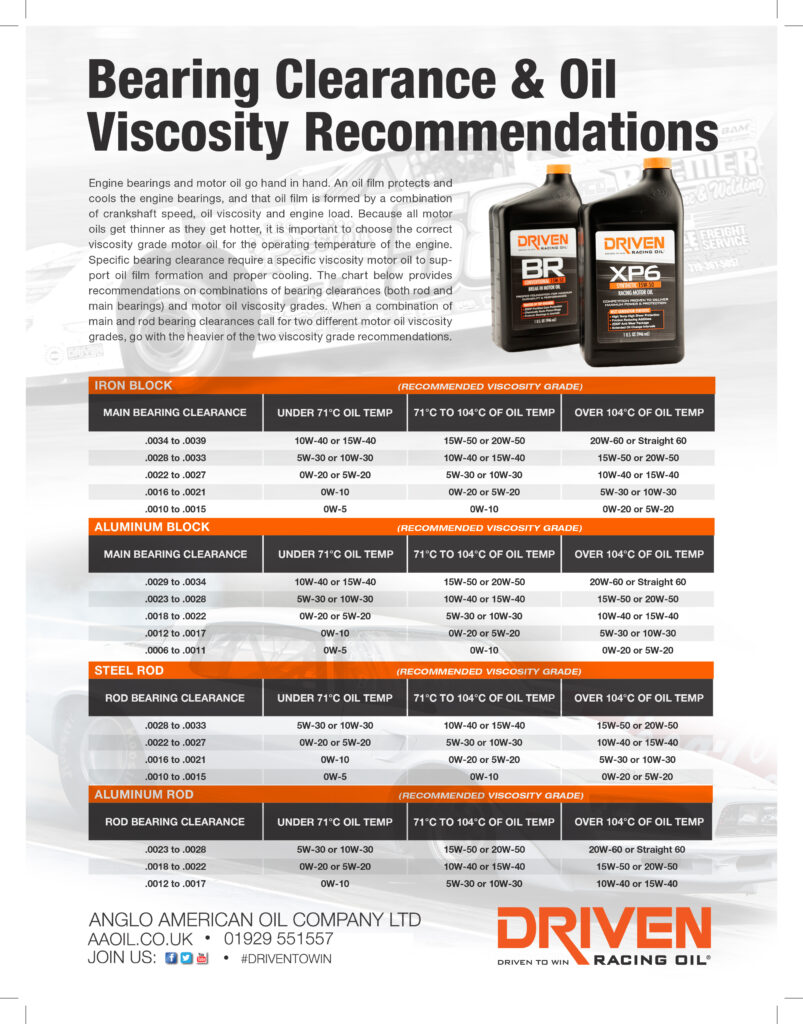What determines which viscosity we should have in the engines for racing? Word of mouth? Tradition? Or simply as thick oil as possible?
Well, although engine builders are by far the most qualified to recommend which oil you should use, they typically go on experience and don’t really have time to look at any alternatives.
Below we’ve attached a great chart to help you understand the basics of the theory.

Viscosity Facts
- Larger bearing clearances mean a thicker oil is needed.
- Higher revs mean a thinner oil can be used (that’s why we have grease in wheel bearings and not oil).
- If an engine is built for a 10W-40 oil at 100°C but lack of cooling results in a running temp of 120°C, the oil viscosity will have to be increased to maintain oil pressure and stop bearing wear (however please bear in mind the a thicker oil will run hotter as it can’t dissipate heat as quickly as a thinner oil).
- This means that is some cases it is better to reduce the thickness of the oil to bring down the oil temperature.
- Multigrade additives wear and as a result oils thin down. A base oil with a higher viscosity index will need less multigrade additives and will not thin down as quickly as one with a low viscosity index and lots of multigrade additives.
- All oils thin down with increasing temperatures. This means that a viscosity that is fine at 100°C might be too thin at 110°C
- If you are running too thick oil (or running the oil too cold) you will have less oil flow in the engine, loss of power, build up of impurities and moisture and risk of aerating the oil.
- Ideal oil temperature is 100-105°C
- If your engine builder recommend you a viscosity, make sure they tell you the recommended oil temperature for that viscosity.

It’s all well and good having data on the bearing clearance and temperature. But how do you truly see what’s happening in your engine? How can you monitor your engine health before a problem develops?
Well, in conjunction with SPEEDiagnostix, we can provide you with that information. Our new oil wear testing will paint a clear picture of the wear metals in your oil. Simply fill in the sample bottle and return it to the lab for us to be able to show you if your engine is about to break in or if your oil is the about to give out.
